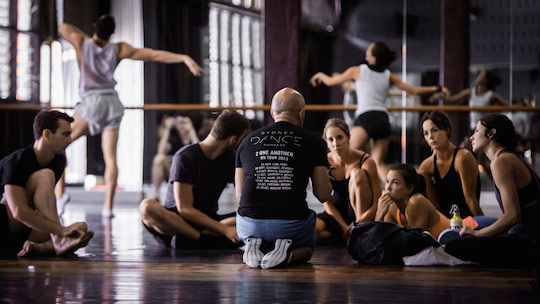Who hasn’t experienced the frustration of a “bad hair day,” when it feels like everything hinges on your hair’s refusal to cooperate? It may seem like a trivial concern, but our hair plays a significant role in how we present ourselves to the world. This is why many people use their hair as a canvas for self-expression, showcasing their personalities through unique cuts, styles, and colours. We can all recall distinct trends, from the skinhead movement to the contemporary craze for vibrant hair hues, that nature never considered. This is where hairstylists come into play. They are more than just skilled professionals wielding scissors and combs; they are artists, confidants, and magicians who transform ordinary hair into stunning masterpieces.

The role of a hairstylist goes beyond simple haircutting and styling; it encompasses a sharp eye for detail, an awareness of fashion trends, and an innate ability to form genuine connections with their clients. At its core, being a hairstylist is about more than just cutting and colouring hair. It involves understanding the unique needs of each client, as well as the latest trends and techniques in hair care.
Hairstylists provide a range of services, including cutting, colouring, styling, and treating different types of hair.
Services Offered:
- Shampooing, rinsing and conditioning hair
- Cutting hair using clippers, scissors, or razors
- Colouring, bleaching, tinting, or straightening hair
- Applying treatments, such as permanent waving (a ‘perm’)
- Styling hair using brushes, combs, and curling or straightening irons
- Massaging and treating scalps
- Braiding, cornrows, weaving in permanent hair extensions
- Offering advice to clients on how to care for their hair at home
- Recommending haircare products and their usage
- Some hairstylists specialise in a specific hair type or service, such as short hair, curly or wavy hair, or afro hair.
Hairstylist Skills
At the heart of every successful hairstylist lies a solid foundation of technical skills developed through extensive training and hands-on experience. Mastering cutting techniques – such as layering, texturizing, and precision cutting – is essential, as each careful snip of the scissors must be intentional and precise to achieve the desired look. Texturizing hair is a process that can add volume, reduce frizz, and make curls more manageable. It can be done with chemical products or by using shears or a razor. In addition to cutting, hairstylists excel in a variety of colouring techniques, ranging from subtle highlights to striking, fashionable hues. A deep knowledge of hair science, including texture, porosity, and the effects of various chemical treatments, is crucial to their skills. However, technical skills alone are not enough; hairstylists must also possess a creative vision. They need to picture the final result and tailor their styles to meet each client’s unique needs. This creative talent often shines in hair shows and competitions, where stylists push the boundaries of conventional hairstyles to craft unique and cutting-edge masterpieces. A hairstylist’s portfolio is a testament to their artistic capabilities, showcasing a range of styles that highlight their versatility and creativity.
The Personal Connection
In a busy and chaotic world, hairstylists often become trusted confidants to their clients. The salon chair becomes a safe space where clients share their stories, joys, and sorrows. This personal connection is integral to the hairstyling experience. A good hairstylist listens actively and shows a genuine interest in their clients’ lives. This rapport builds trust, making clients more comfortable experimenting with new styles and colours. This may be a simple matter of pushing the boundaries of the client’s comfort zone into something more adventurous, giving them confidence in their outward appearance. We should never forget the impact of well-styled hair in providing that extra finishing touch to any outfit, whether casual or formal. Hairstylists also consider the lifestyles of their clients and advise on the best cut to suit them, factoring in the demands on their time and lifestyles. A good hairstylist knows how to listen to a client’s needs and desires while also offering expert opinions and guidance. Sometimes what the client thinks they want is not a wise choice for their lifestyle and it is up to the hair stylist to advise and steer the client to a style which will be more suited to their activities and time constraints. It would be fair to say that a skilled and knowledgeable stylist knows how to approach such issues with confidence, understanding and foresight. A well-informed stylist can provide tailored advice and innovative solutions, ensuring that clients leave with more than just a haircut – they leave with confidence and knowledge about maintaining their new style.
Job Challenges
We might think of hairstyling as a glamorous job, but it comes with its unique set of challenges. Long hours on their feet, exposure to chemicals, and the physical demands of repetitive motions can take a toll on a stylist’s health. Carpal tunnel syndrome, back problems, and respiratory issues due to constant exposure to chemical treatments are common ailments in the industry. Therefore, hairstylists must be vigilant about their health, taking breaks, using ergonomic tools, and practising proper techniques to avoid injuries.
Moreover, staying updated with the latest trends and techniques is crucial in this ever-evolving field. Continuous education through workshops, seminars, and courses is necessary to keep skills sharp and knowledge current. The fashion industry significantly influences hair trends, requiring hairstylists to remain aware of, and knowledgeable in, runway styles, celebrity looks, and new and innovative hairstyling and grooming products. Trends often originate from the runways of fashion weeks, social media platforms, and the influence of hairstylists working with celebrities.
Impact on Clients’ Lives
Hairstylists play a vital role in some of the most significant and memorable moments of their clients’ lives. Whether it’s a wedding, a matric dance, a job interview, or a personal transformation because of a life event, a hairstylist’s contribution can enhance or even define the occasion. For individuals experiencing major life changes, such as recovering from illness, hairstylists can be key players in helping them express their new identities. By creating a look that allies with their identity and aspirations, hairstylists empower their clients to face the world with renewed confidence and pride. One should never underestimate the role that these professionals play in our lives.
The Future of Hairstyling
As the beauty industry continues to evolve, so too does the role of the hairstylist. Technological advancements such as virtual consultations have become available, allowing clients to seek advice and explore options before stepping into the salon. Some stylists may offer augmented reality try-ons, where you can view new hairstyles tailored to your unique identity before a single strand is touched. Here you can ‘try on’ different hairstyles using a computer program which overlays the styles onto a picture of your face. In addition, the driving forces of inclusivity and diversity in our modern world compel hairstylists to be proficient in a wide array of hair types and textures. This shift is creating a more inclusive beauty landscape, where everyone can find a stylist who understands their unique hair needs.
With technological advances and innovations constantly evolving, hairstyling is being taken to new levels of expertise. No matter what your hair type, these professionals have an answer to keeping it beautiful and stylish. Their work is a blend of technical skill, creativity, and empathy, making them indispensable in the world of beauty and fashion. Hairstylists will continue to adapt, pushing the boundaries of their craft and constantly enriching the lives of the clients they serve.

